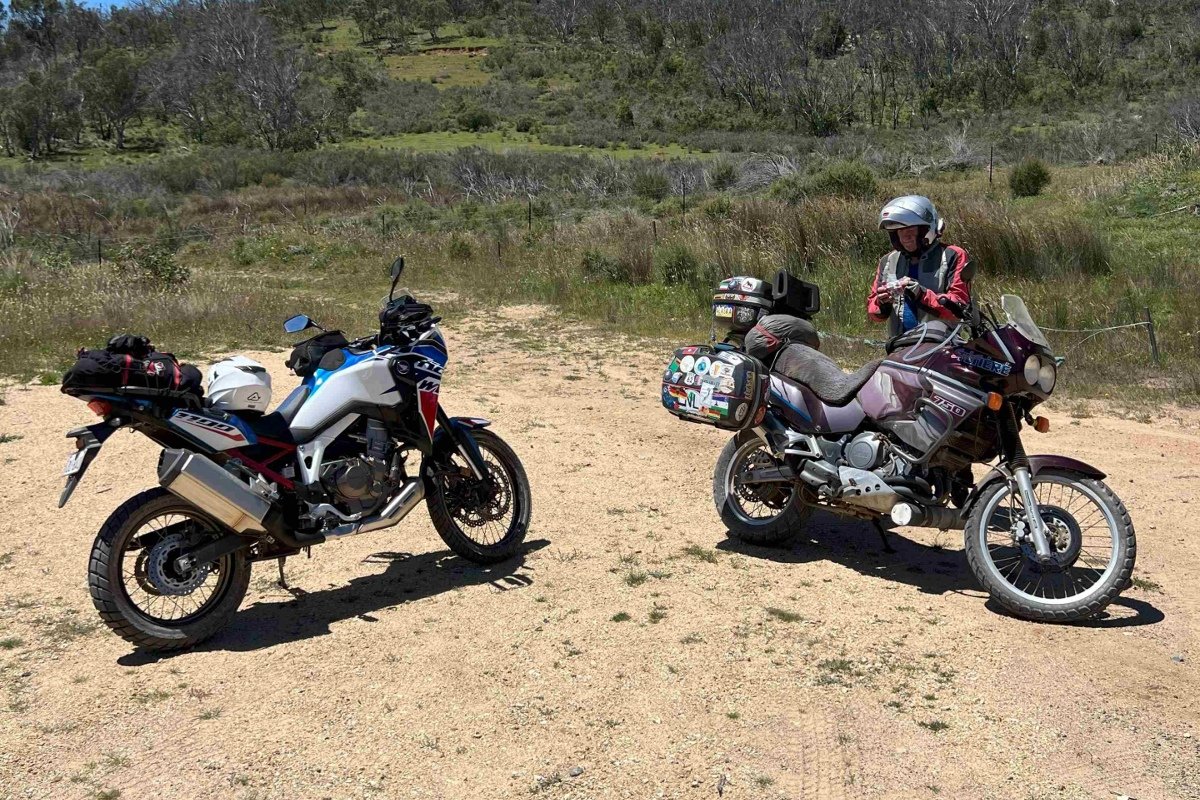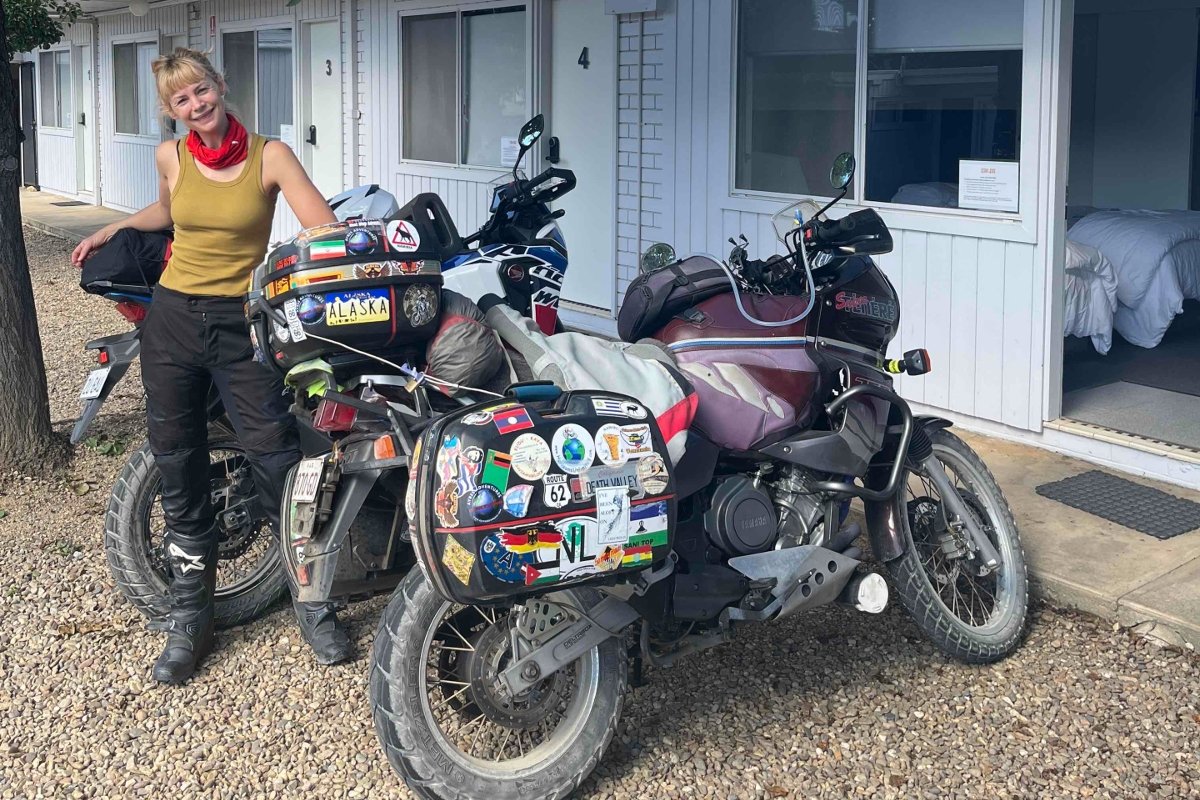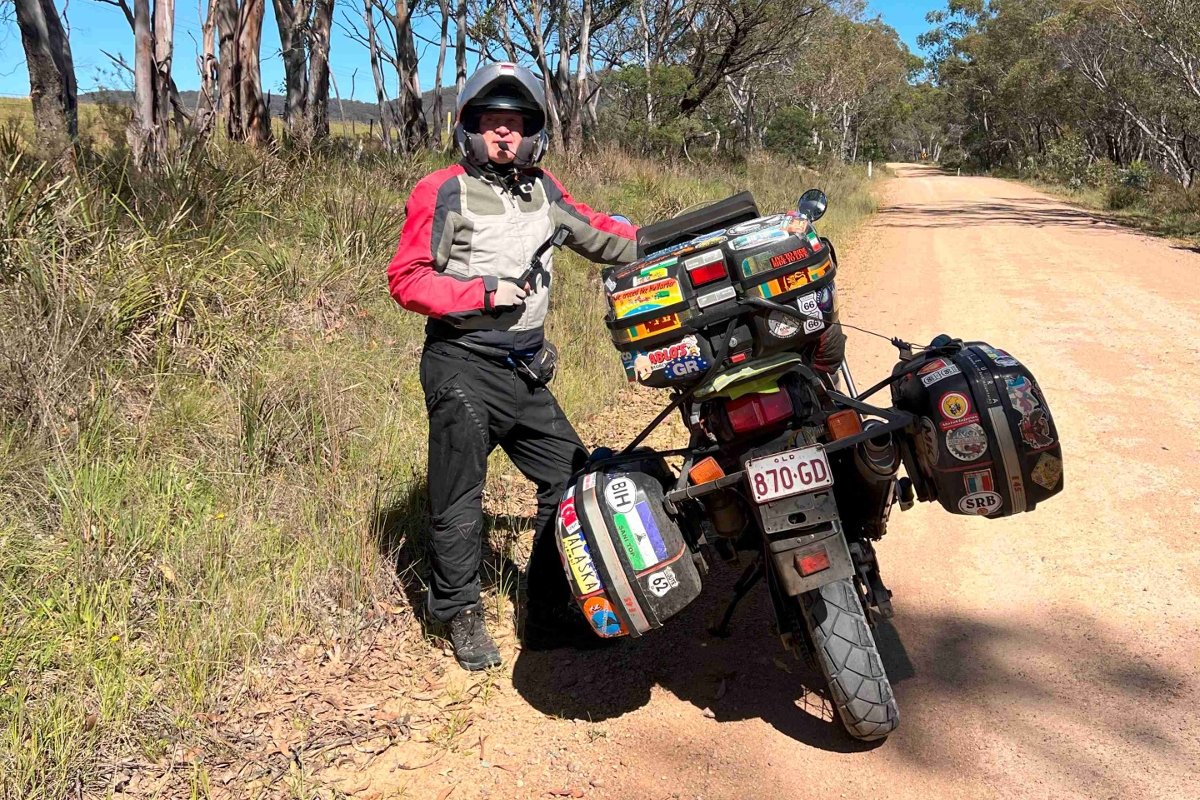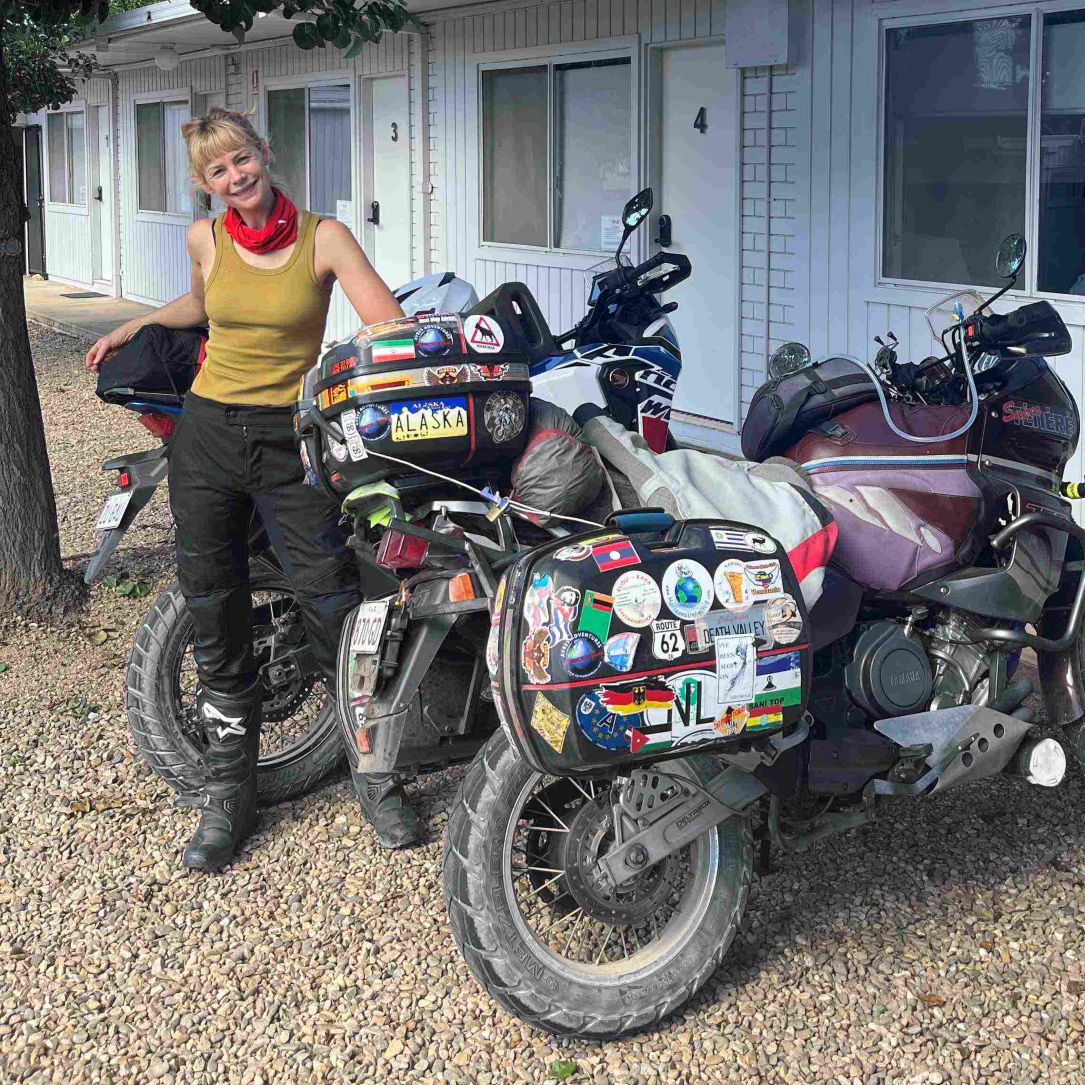
Going on an overnight trip? Perhaps a week away? Maybe you are just commuting to work each day. Where do you put your stuff?
It’s possibly one of the reasons I’d go buy a scooter, so I can store shopping under the seat. Alas, that pesky fuel tank and engine gets in the way on motorcycles, therefore we have to look for external options. I’ve often been caught at the shops with too many groceries for my backpack and have become quite accustomed to riding home with a bunch of celery popping out the top of my leathers, tickling my chin or perhaps a six-pack of eggs sitting precariously between my stomach and jacket. Indeed some of these items can compliment your ride like a pack of loo rolls, squashed and buttoned up under my denim ensemble adding a further layer of protection and warmth. But there are better ways to travel with your goods and below are some great options when you need to carry more than wallet, and eggs in your jacket isn’t your jam.
Most luggage falls into either the soft or the hard luggage category so whatever shape or size, below are the pros and cons of each category.
Soft luggage

Let’s start with tank bags. Great for handy access to a small amount of goods. Perhaps a phone, a map, a charger, a wallet, a snack or headphones. Often about the same size as a big fanny pack. Not often waterproof but water resistant.
Soft luggage is generally the low key, affordable option. This can include saddle bags through to my favourite, the cargo net with overnight bag strapped on the pillion seat. Saddle bags sometimes require an adjustment to the frame to secure on and are more permanent. Great for commuting to work. And the occasional overnight ride. The duffel bag and jockey strap method is a temporary, quick easy fix to carry a load, great for tightasses and overnighters. To be honest, I keep a jockey strap or cargo net relatively handy, you never know when you might need to strap something down. You can even secure a helmet to your motorcycle under a cargo net when you need to pop in for a coffee and don’t want to take your lid with you.
Let me hit you with the cons first:
- Security. Unlike the hard shell luggage, you can’t securely lock your soft luggage. Anyone with a pair of kitchen scissors can delve into the array of Allens lolly wrappers you have left stewing in the bottom of the bag.
- Soft luggage isn’t waterproof. Obviously as the bags are made of fabric, water will penetrate. Some might be water resistant but there is a good chance some water will still seep in. Unless you’re moving too fast for the rain but then you may incur a speeding fine. However, I’ve done many long rides with a fabric duffel bag strapped with a cargo net to the back of my bike. If there is a rain cloud on the horizon when you’re packing up, just place your belongings into a plastic bag inside your soft fabric bag. If you’re traveling with valuable tech items i.e. computers the risk is on you. Soggy knickers you can live with, soggy computers don’t dry out so well.
- Dirt – they can get dirty, dusty and even sometimes muddy. Be careful when travelling off road. Don’t drop your bike in a mud crossing or a river crossing.
Potential instability. Soft bags under straps can fall off. Or slip to the side causing all kinds of chaos, getting stuck in the chain or the tyre or just causing general imbalance on the bike. Dangerous! Not to mention all the cars passing by, trying to sign language to you that your load is about to evacuate your bike at 110km/h down a highway. Very distracting. Make sure you give your bag a really solid tug before you take off and double check all the hooked areas are secure. Especially if you are going off road. Nothing worse than rocking up to a motel with no bag. - Ugly – Saddle bags and strapped on bags can be quite ‘asthetically challenged,’ to put it politely.
The pros are:
- Affordable. It’s the best option for tight asses. You can use a scrappy gym bag, your everyday backpack or just something you are happy to throw away at the end of your trip.
- Temporary and easy to use. Load it on anywhere, anytime and pull it off whenever. Onto your bike or perhaps onto someone else’s. A cargo net can fit over a variety of shapes and sizes so even if it’s not a standard bag shape, you can generally get the item home.. if you’re careful.
- Grocery shopping. Saddle bags are great for it and for your everyday commute. You can squash things in that may not fit in a restrictive hard case.
- Lane splitting safety – Soft luggage creates far less damage to other vehicles if you do forget it’s there. This is very easy to do, even for the most experienced riders. It is not uncommon to misjudge the size of panniers and proximity of the car when lane splitting. BEWARE.
The cons do seem to outweigh the pros but this is the method I use most when going for overnighters. Even week-long rides.
Hard luggage

The fanciest version of moto luggage. Generally made of plastic or aluminium, some hard cases can be quite stylish and some are built like military tanks. Some sit as top boxes, behind the pillion seat, secured onto a tray and are secured to the motorcycles frame towards the back of the bike, sandwiching the rear tyre.
The cons of hard cases are:
- Expensive. A small top box can be around $130 but once you start to increase the size and quality you can get up to $2000 although many sit around the $600 mark. That’s not including the extra bits and bobs of the mounting racks and parts to make sure the box is secure.
- Weight and size. Heavy and cumbersome to lug around but also when riding, hard cases can add significant weight and bulk to the motorcycle, affecting handling and manoeuvrability.
- Potential safety hazards. They are extremely hard and rigid – If you forget or misjudge the size of your luggage there can be consequences. I’ve seen hard luggage scratch cars, take people out and stop motorcycles in their tracks if they get stuck on a bollard, especially at speed. It’s also good to be aware, if you are riding and slip off, hard panniers can actually do a lot of damage to legs and limbs if you get stuck under one.
The pros are:
- Security. You can lock these bad boys up and walk away. All your precious valuables are safe and sound as long as no-one steals your motorcycle, you remember to actually lock the box and finally, you remember to remove the keys. The final one is sometimes the most common one, I can’t count the number of motorcycles I’ve seen on the street where the owner has left the keys in the ignition. I’m happy and embarrassed to admit I’ve done it myself on numerous occasions.
- Weatherproof. This option is watertight. You can ride in the rain, leave it outside, overnight and it will still be dry inside the next day. Drop it in a river crossing or a mud bath and simply hose it down.
- Capacity – You can fit a decent amount of soft gear in here and really squash it down. The secure closure on a hard luggage case means it will not pop open. Top boxes are generally designed to fit at least one helmet.
- Durability – Hard luggage can take a real beating. You can drop it, throw it, drown it or hit it with a hammer. Besides a few scratches, it’s going to be hard to penetrate or break this sucker.
- Ease of cleaning. Easy to maintain with a quick wipe down, ideal for muddy or dusty environments.
So there you have it, who knew there was so much to chat through when it comes to motorcycle luggage!
The short and fast of it is – long trips with valuables, look into the hard luggage. Short trips, not as many valuables, see how you go with some soft luggage. You can always upgrade.
As for the transport of eggs, that actually depends on how good of a rider you are…













Discussion about this post